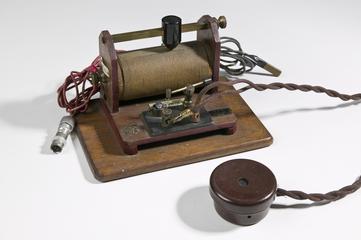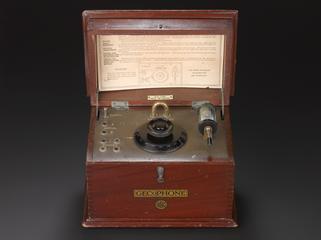

Metal component associated with the "Cintel" twin-lens flying-spot telecine, unsigned [very probably Cintel], c.1957
Films are televised either by combining a film projector with a television camera or by means of a ‘flying-spot scanner’ such as this.
A moving spot of light, produced by a cathode-ray tube, was focussed onto the film, which rolled steadily through the machine. A photocell on the far side collected the transmitting light and hence generated a picture signal.
The machine had to transmit exactly one frame of film per television picture period. In practice, this meant that film had to be shown at 25 pictures per second on European television standards, and that this time of machine could not be used in the USA or any other country which transmitted at 30 pictures per second.
The flying-spot principle lent itself ideally to colour operation, since no problems of registration then arose. In later versions of this machine, designed for colour operation, the transmitted light was split into three separate beams, according to colour. These beams were collected by three photo-cells, to yield red, green, and blue signals respectively.
Details
- Category:
- Radio Communication
- Object Number:
- 1971-384/10
- Materials:
- metal (unknown)
- type:
- component
- credit:
- Rank Precision Industries Ltd.




